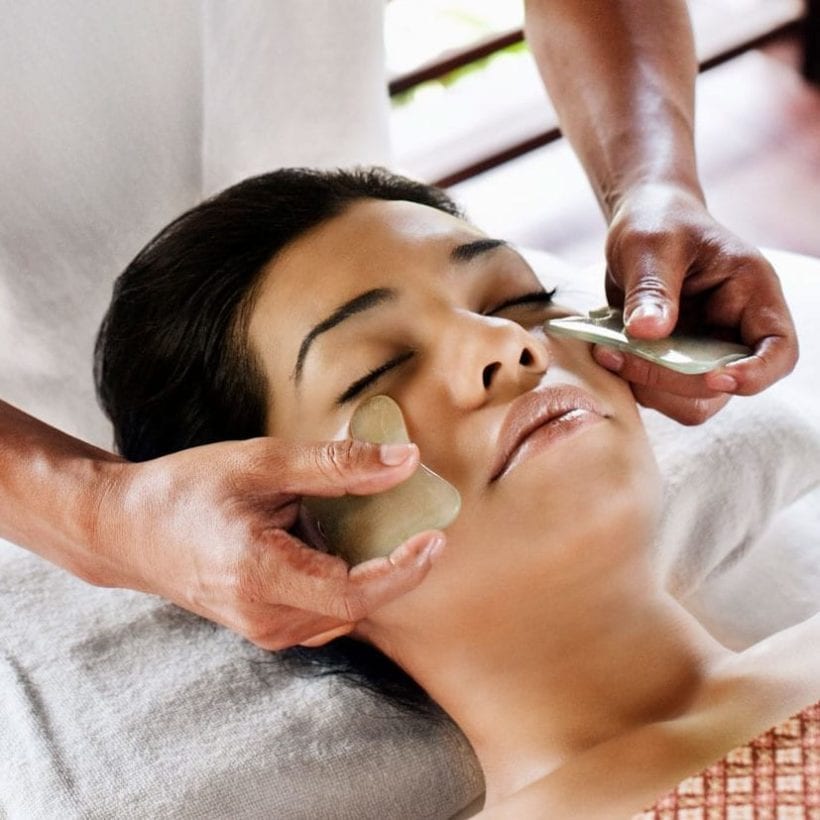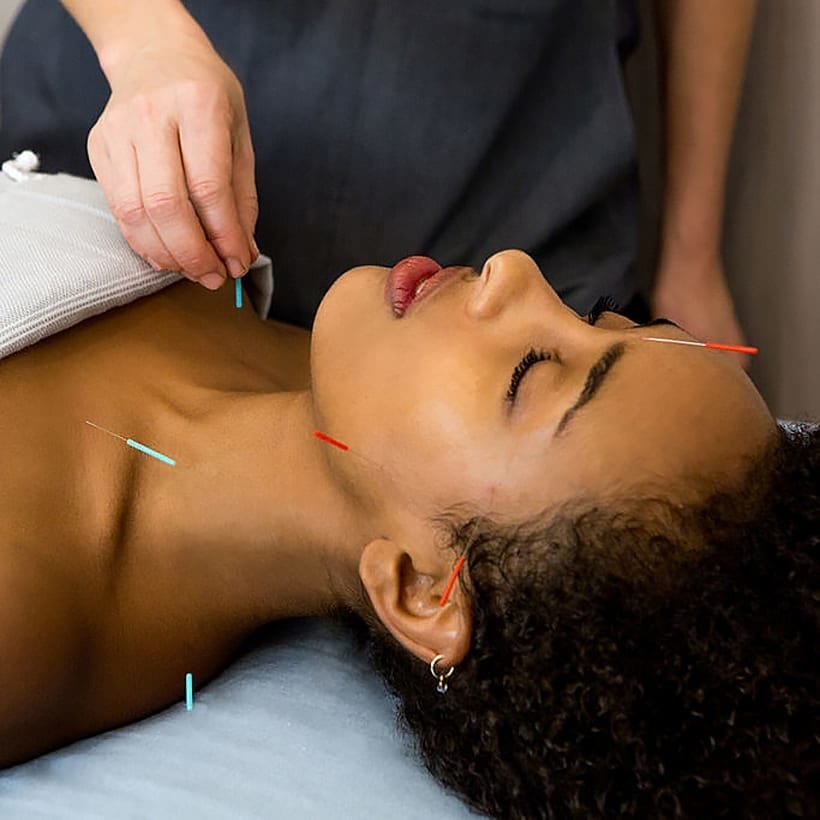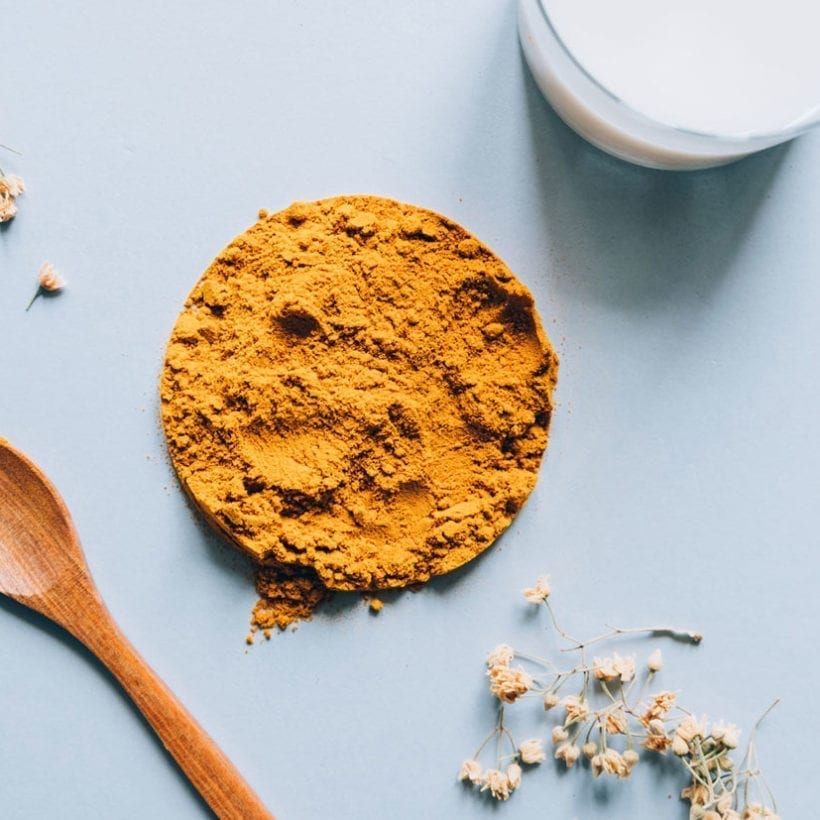Traditional Chinese medicine is becoming commonplace in the wellness — and beauty — world. The techniques, ranging from acupuncture to turmeric and jade rollers, are once again finding weight amongst those in search of routines that work, especially in the Western world. In 2016, China exported 15.34 percent of traditional Chinese medicine imports ($526 million) to the United States. And because each tool and technique has its own history behind it, consumers are readily embracing these ancient healers.
Take a self-help tool like tapping. Essentially acupuncture without needles, this technique involves repetitively tapping on the body’s meridian points to release tension and restore balance to your internal system. Also known as the Emotional Freedom Technique (EFT) or Meridian Tapping, the practice is by no means new. The origins of tapping lie in traditional Chinese medicine, an ancient philosophy of healing — where illness and pain occur when the body’s qi (pronounced chi), or vital energy, cannot flow freely — that evolved in the Far East thousands of years ago.

This technique was rediscovered by well-known US-based chiropractor Dr. George Goodheart in the 1960s. While practicing acupuncture in his clinic, he discovered that substituting acupuncture needles for simple manual pressure could bring about similar results. Subsequently, he formulated a tapping technique using recognized acupressure points. While acupuncture restores the flow of qi via placing hair-thin needles at specific energy points, tapping puts pressure on these points using the hands.
Dr. Roger Callahan, an American psychologist with special knowledge of anxiety disorders, took Goodheart’s work a step further. Callahan developed a treatment that fused Goodheart’s tapping technique with a style of talking therapy. When patients tapped on specific meridian points while repeating a series of phrases out loud, impressive results were noted.
“Tapping is a simple, quick-working and efficacious self-help tool. It can help release negative emotions such as anxiety, stress or fear,” says Jody Shield, meditation expert and EFT practitioner. In her new book, “Self-Care for the Soul: Power Up Your Brightest, Boldest, Happiest You,” Shield documents how the practice of tapping can be beneficial for a whole host of issues. “Known to restore balance within the body, tapping can be useful in helping issues such as chronic pain, emotional problems, disorders, addictions, phobias, post-traumatic stress disorder and physical diseases,” Shield explains.
Tapping sends message to the fight or flight part of the brain, the amygdala, to relax, which in turn has the benefit of reducing anxiety and stress. Research by ETF master Dr. Dawson Church found a direct link between tapping and reduced levels of the stress hormone, cortisol. The average cortisol reduction after an EFT Tapping session was 24 percent, and even hit as high as 50 percent in some test patients.
Although an array of alternative healers use ETF techniques within their work, basic tapping is a technique anyone can learn at home. “It’s simple, powerful and painless, and once you’ve familiarized yourself with what you’re doing you can use it anywhere and anytime,” Shield adds. You may look a little strange if you start tapping at your office desk, but you can easily take a few moments to clear negativity at home before a busy day, or combat overwhelm before a big meeting.
Tapping is simple, powerful, painless, and you can use it anywhere and anytime.
So how do you do it? First things first, focus on the negative emotion you are facing. This can be something general such as stress, fear or anxiety, or related to a more specific situation or person. It certainly sounds counterintuitive but stick with it. While you focus on it, tap each of the meridian points 3-7 times and repeat phrases about the emotion or issues you are facing. These phrases will be different for everyone and every situation. At the beginning of the tapping sequence, you focus on negative phrases (e.g. ‘I am overwhelmed’, ‘I am stressed’, ‘I am scared’) and then you move on to positive ones (e.g. ‘I know I can do this’, ‘I am calm’, ‘I am strong’).
The tapping sequence starts by tapping on what Shield calls the “karate chop point” — this is on the little finger side of the hand. “Start by tapping the karate chop point three times while saying your first phrase out loud or under your breath. You then shorten your chosen phrase and tap the following points: the eyebrow, side of the eye, under-eye, under nose, chin, collarbone, under the arm, top of the head.”
Try Shield’s tapping technique for tackling overwhelming feelings below. Simply adapt the sequence for your own situation by changing the phrases to reflect your chosen feeling. If you have a longer period of time, you can repeat the sequence more than once or increasing the number of times you tap on each point.
Start by tapping on the karate chop point (the little finger side of the hand). Tap on each point approximately seven times. As you tap, repeat the following phrase three times:
-
- “Even though I’m feeling overwhelmed right now, I deeply and completely accept who I am and how I feel.” (Repeat three times.)
Continue tapping on the other points and say each of these out loud as you do:
-
- Eyebrow: “I’m completely overloaded . . .”
- Side of the eye:. . . and I can’t think straight.”
- Under eye: “There’s too much going on.”
- Under nose: What if I miss something?
- Top lip: “I don’t know how to get through everything.”
- Chin: “No one else understands.”
- Collarbone: “It all feels so hopeless.”
- Underarm: “There’s too much going on right now.”
- Top of the head: “I’m completely overloaded.”
Do a couple of rounds of these shorter phrases until you feel better then move on to this:
-
- Eyebrow point: “I’m willing to surrender.”
- Side of the eye: “Holding on doesn’t serve me.”
- Under eye: “There has to be another way.”
- Top lip: “I’m willing to be open to a solution.”
- Chin: “I choose to surrender now.”
- Collarbone: “There has to be another way.”
- Underarm: “I choose to relax now . . .”
- Top of the head: “. . . and know I’m a good person.”
Do a couple of rounds of this until you feel more positive.
To finish, take some nice, deep breaths in and thank yourself for letting all this go and giving in.







